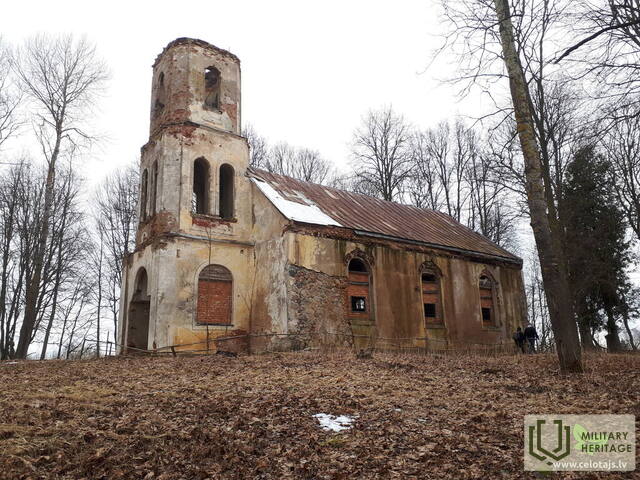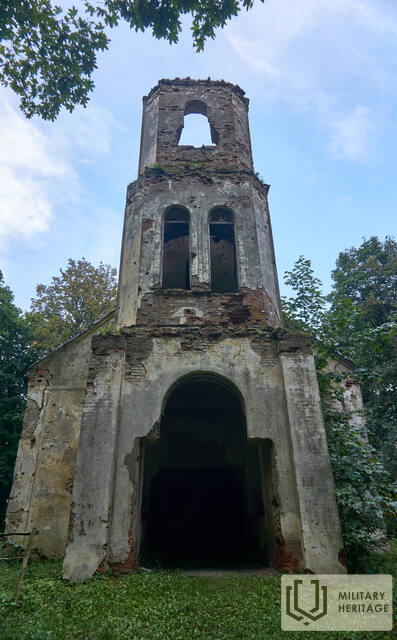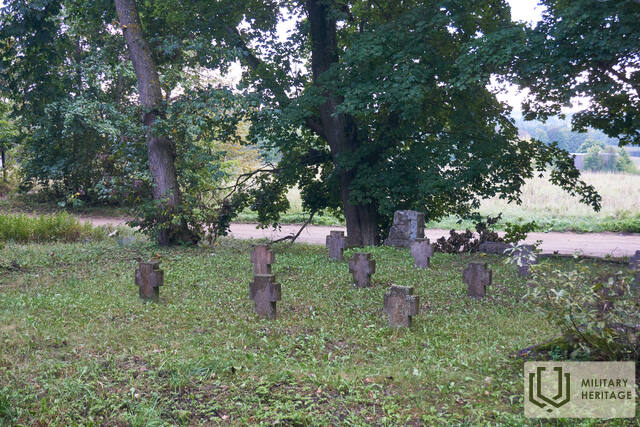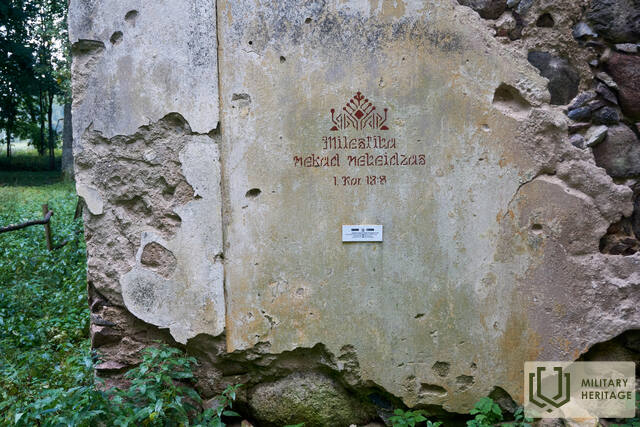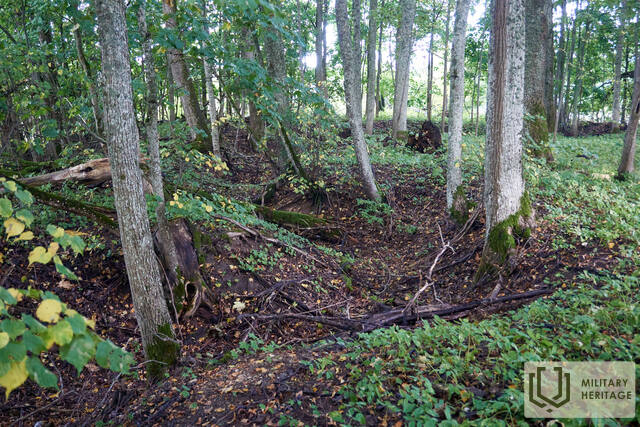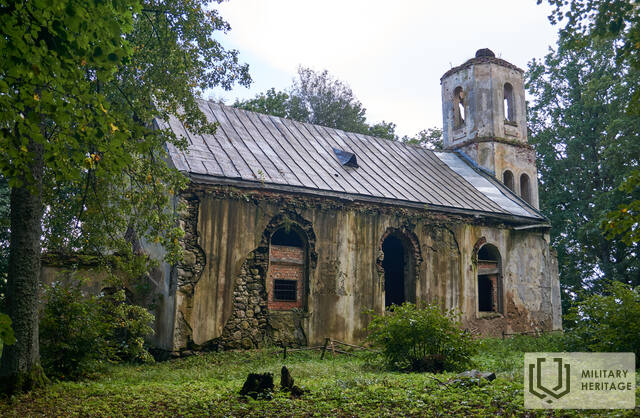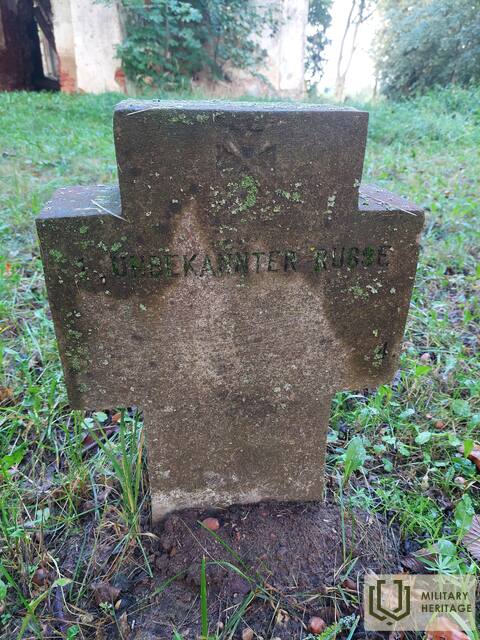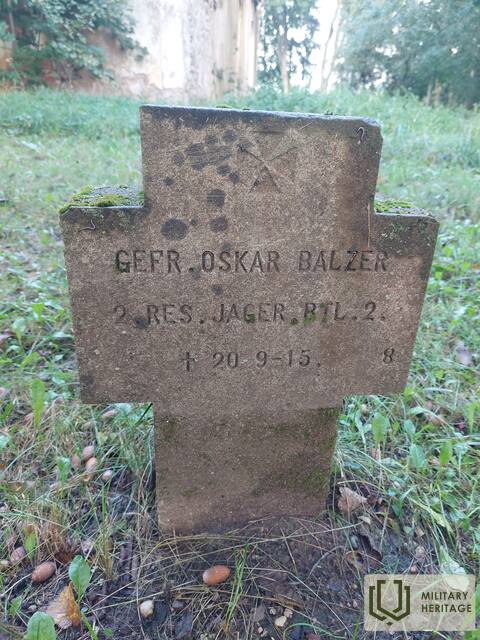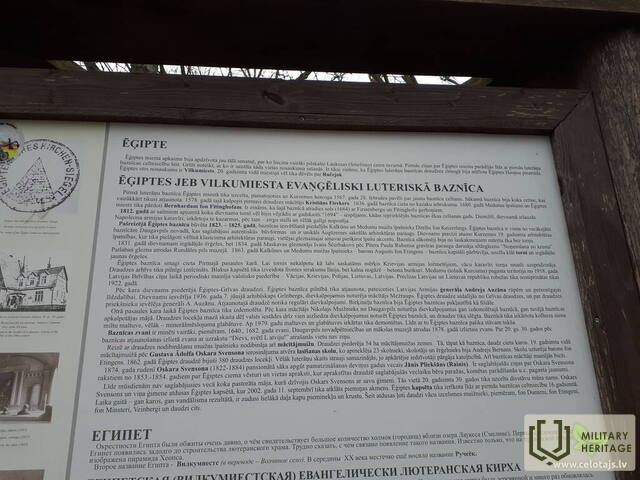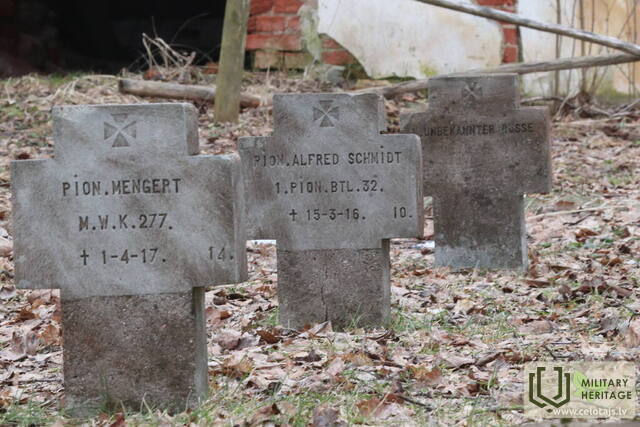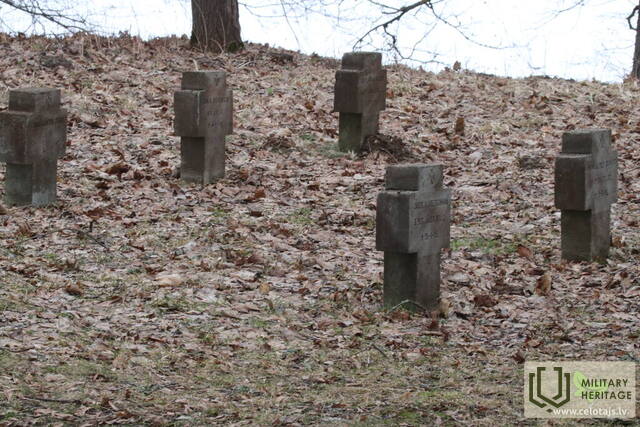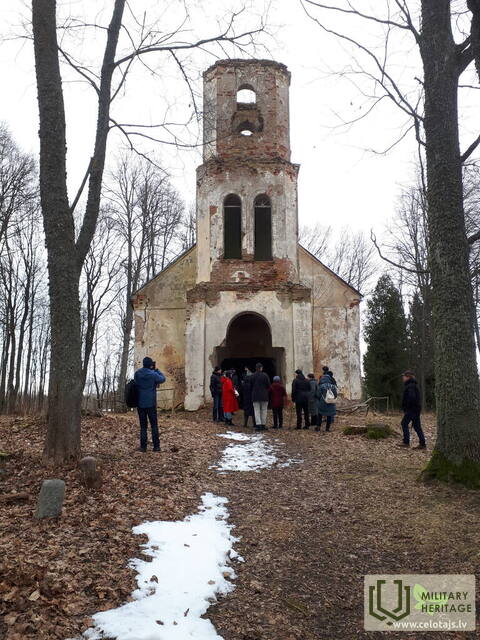Egyptian Lutheran Church Battle site

Located in the village of Egiptes near the border checkpoint with Lithuania, on the side of a gravel road. Easily visible and accessible.
The Lutheran congregation in Egypt was founded in 1567, but the Egyptian Lutheran congregation church in Vilkumiesta (the former name of Egypt) was built in place of the previous wooden church by the nobleman A. Ettingens in 1823. The church was destroyed in the battles of the First World War, and the congregation archive was lost. The Germans are said to have blown up the church tower so that it would not serve as a target for artillery and machine guns on the Russian side. The church was restored in 1930, thanks to the care of Latvian army general Andrejs Auzāns, who in the 1920s in the Medumi parish purchased country houses and cultivated a farm. The church was repeatedly destroyed during the Second World War, closed during the Soviet years, and, typical of Soviet rule, a hay mill and a mineral fertilizer storage facility were installed in the church. Since 1979, the church has been empty.
Currently, the ruins of the church and the nearby cemetery are freely accessible for viewing. There is a parking lot near the church, an information board, and a scenic view of Lake Laucese (Smelīne) and the territory of Lithuania on the opposite shore opens up. The walls of the church are decorated with traces of shells, but you can freely enter the ruins, however, it is advisable not to do so and to exercise caution, as the ceiling structures are in a state of emergency and can collapse. In front of the church, there are wartime German burials, where one unknown Russian army soldier is also buried next to the German soldiers, for whom the Germans installed the same concrete cross. Behind the church are older pre-war burials, however, due to wars and vandalism, some of the monuments and crosses have been lost. Many noblemen of German origin rest here - von Dunten, von Oettingen, von Münster, Weinberg, etc. On the northern side of the cemetery, you can see the German trench line of the First World War. During the war, there was a reserve line here. Near the Egyptian Church is the so-called "Officers' Bunker", which is one of the concrete bunkers of this line.




